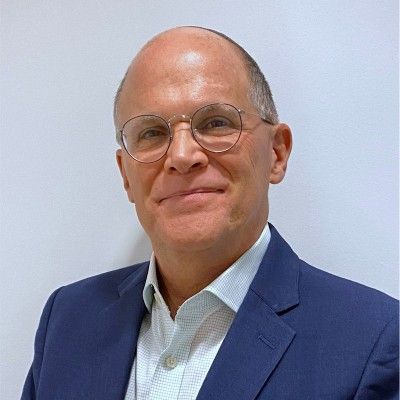The Future Has Arrived and Is Knocking. Getting Ready for the Arrival of Cell and Gene Therapy | 2023 Asembia Specialty Pharmacy Summit
A relatively small number of cell and gene therapies have become a clinical reality. But now the specialty pharmacy industry, and healthcare more generally, is bracing for a wave of cell and gene therapies that will force change and adaption. And, yes, the new therapies will be extremely costly.
Tinkering with genes and replacing faulty ones to treat and cure diseases used to be the stuff of basic science and more than a little science fiction. Now it is fast becoming just another part of the day-to-day news about late-stage drug development, competing therapies jockeying for position and regulatory action.
“Approvals are coming, gene therapies, cell therapies are coming, at more rapid rate over the next several years,” said Stephen Kagan, M.D., Global Medical Lead, Genetic Medicine and Early Pipeline, Rare Disease, at Pfizer, one of the members of a panel that discussed cell and gene therapy Monday at the 2023 Asembia Specialty Pharmacy Summit in Las Vegas.
In a lively conversation led by questions from the moderator, Natalie Bedford, senior vice president, CenterWell Specialty Pharmacy at Humana, Kagan and the other panelists shared their views about the current situation of cell and gene therapy and the change needed to cope with the bolus of new treatments that will pose new, complicated sets of technical, business and financial issues.
Natalie Bedford

“Truth be told, the science has far outstripped the industry’s ability to keep up from a commercial respect. The reimbursement systems are yet to catch up. The supply chain models are yet to catch up. And from a regulatory perspective as well, a lot needs to happen,” said Ramesh Srinivasan, senior vice president, strategic pricing and manufacturer relations, at McKesson.
Colin Russi, a principal at ZS, a consulting and technology firm headquartered in Evanston, Illinois, shared data showing that in 2025 there may be as many as 79 autologous cell therapies available with 251,000 eligible patients. Russi cautiously predicted the possibility of costs declining as the number of therapies increased.
Stephen Kagan, M.D.

Kagan noted that as genetic screening has increased, so has the number of rare diseases identified by the screening. He said that there now 10,000 rare diseases and that collectively, worldwide, 400 million people have rare diseases. Currently, Kagan said, only 5% of rare disease have treatments.
The yawning gap between the number of diseases and the treatments is also there for diagnosis, Kagan said, noting that the “diagnostic journey” can turn into “diagnostic odyssey,” partly because rare diseases often have symptoms that are largely indistinguishable from common conditions.
Srinivasan said one of the current bottlenecks in cell and gene therapy are the limited number of sites where it is delivered. It takes nine to 12 months to set up a site and a care team of up to 20 people to take care of a patient. operate one once it is up and running, he said.
“These therapies are unlikely to reach their full potential unless we can democratize access to care,” Srinivasan said. “We hear horror stories of late-stage oncology patients waiting for months if not years to get on CAR-T. There are not enough beds. There is not enough capacity.”
George Rafferty, president, corporate partnerships, AmerisourceBergen, spoke about the need to coordinate the patient, product and payment journeys and to help providers manage the complexity of delivering cell and gene therapy. He said, jokingly, that he was making a “shameless plug” for his company’s cell and gene therapy hub. AmerisourceBergen announced last week that it was creating the hub, which the company says will integrate platforms and facilitate data exchange so services can be delivered faster and more reliably.
Somewhat surprisingly, the discussion did not center on the high cost of the current crop of cell and gene therapy, which can run easily into the millions of dollars. Srinivasan touched on the several familiar issues when cost is discussed, such as the durability of the treatments, which may affect payment if payment is tied to the clinical value of a treatment, and the scenario when the cost savings of a possibly curative treatment are realized over many years. Russi noted that number of value-based payment models has proliferated, creating complexity that might be addressed by some standardization.
Kagan also mentioned standardization in the context of the treatments themselves. He envisioned a future when the delivery of gene therapies might be standardized and compared it to the Space Shuttle being used to carry various payloads to the International Space Station. “Standardizing the science would be very, very exciting,” he said.
One of Kagan’s main points was that cell and gene therapy should involve shared decision-making and that, in turns, requires health literacy and an understanding of genetics.
Explanatory information has to be presented not only at a certain grade level but in a way that is “understandable so that people can tell what you just explained to them and then, critically, that it is actionable so that person can take action on the information that they just be learned and that they can be part of that shared decision-making,” he said.
GLP-1 Tiering Agreement Reached, Says Optum Rx President
May 3rd 2024Health plans that use Optum Rx as their pharmacy benefit manager (PBM) will be allowed to tier their coverage of GLP-1s and still receive rebates under an agreement the PBM has reached with the manufacturers, says the PBM president. Optum officials said later that the negotiations were still ongoing,
Read More
Specialty Pharmacies Drive Cost Savings in Value-Based Care | Asembia 2024
May 2nd 2024Earlier this week at the 2024 Asembia Specialty Pharmacy Summit in Las Vegas, Managed Healthcare Executive editors spoke with Bill McElnea, vice president of population health at Shields Health Solutions, about specialty pharmacies reducing costs for patients.
Read More